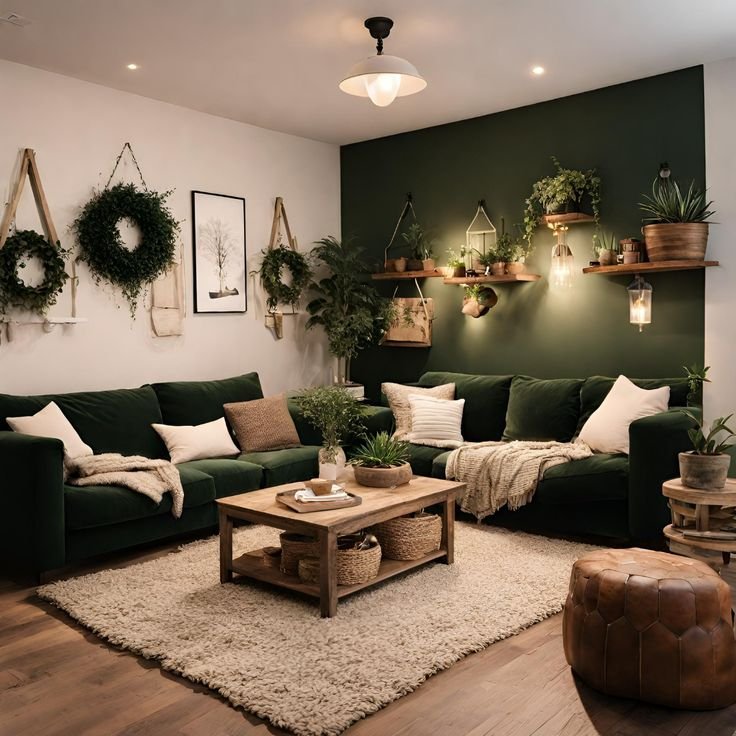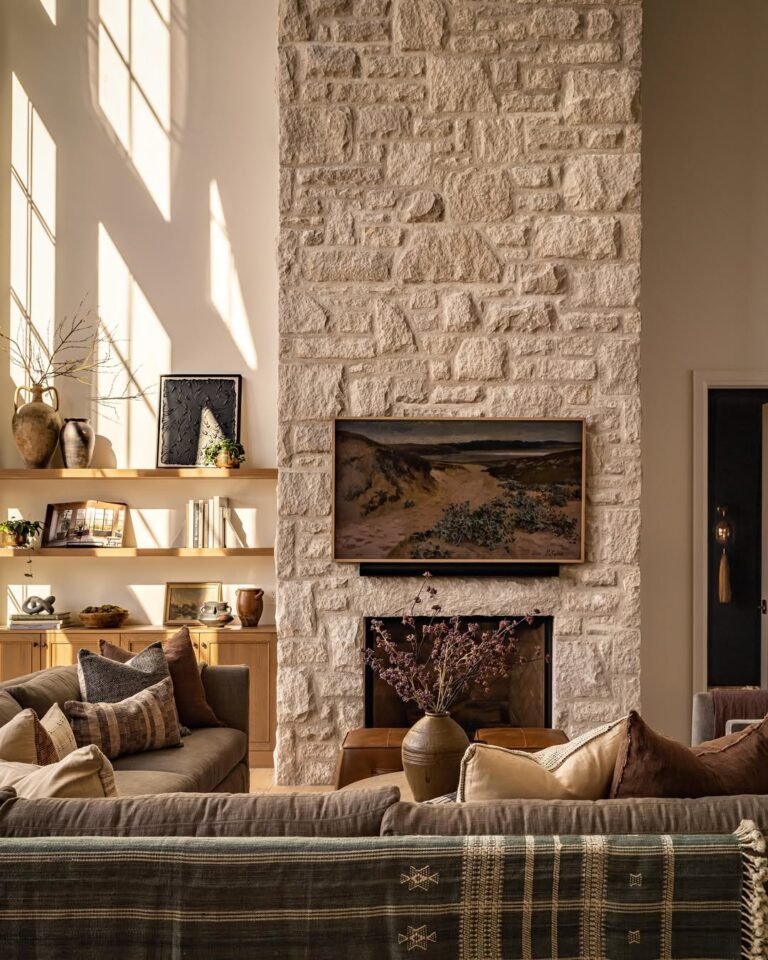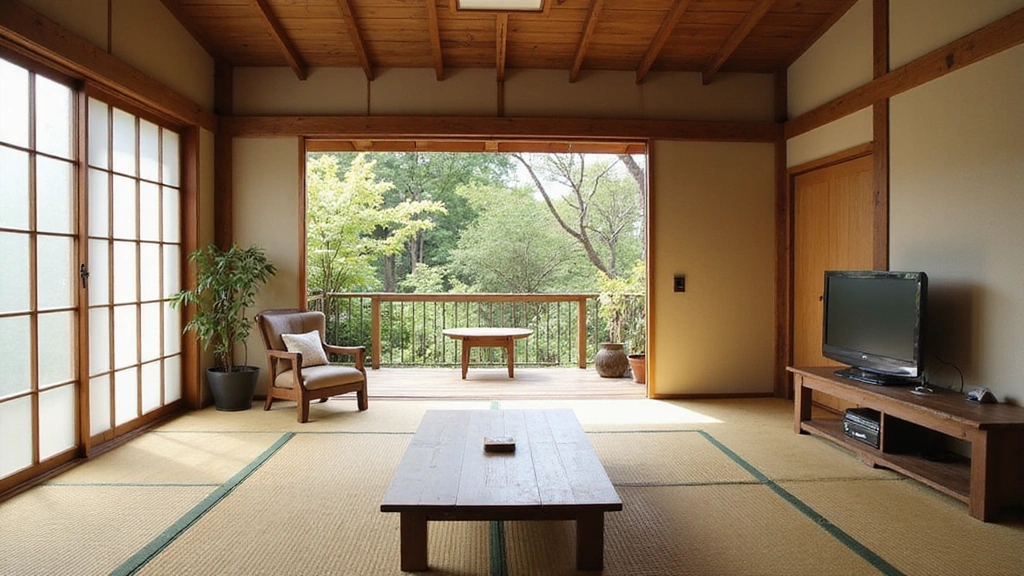
Creating a traditional Japanese living room is all about embracing simplicity, nature, and balance.
This serene design style emphasizes a connection to the outdoors and the beauty of minimalism.
Imagine sliding shoji doors, tatami mats, and a few carefully selected decorative pieces coming together to create a peaceful retreat within your home.
Whether you crave a quiet reading nook or a gathering spot for friends and family, these tips will guide you in designing a space that radiates harmony and tranquility.
Embrace Natural Materials
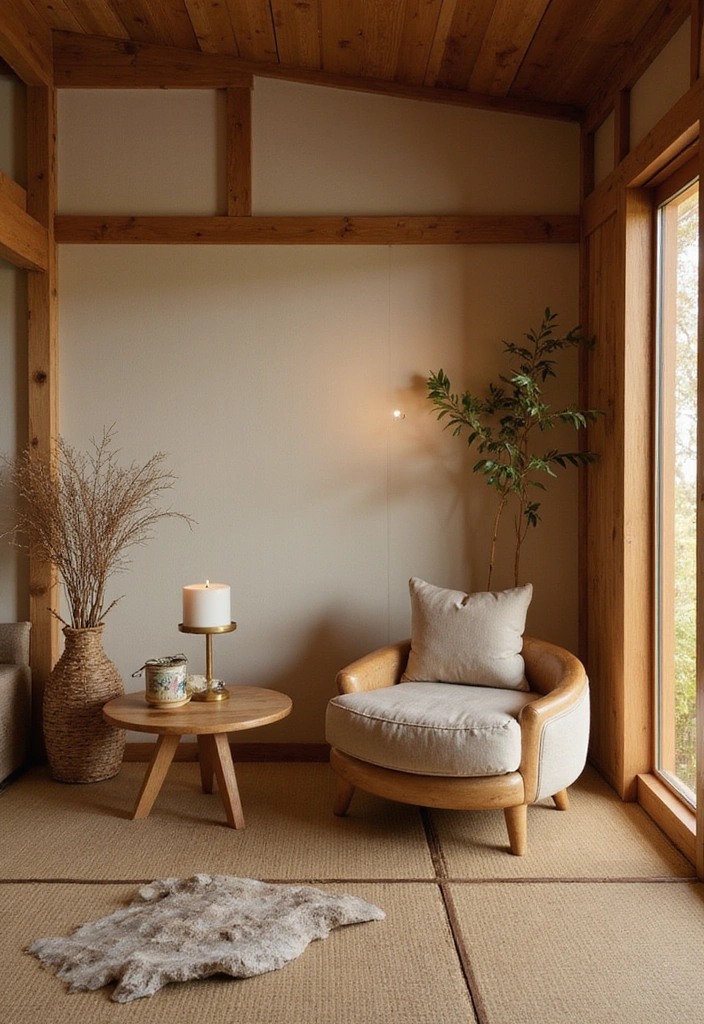
In a traditional Japanese living room, natural materials reign supreme.
Wood, paper, and stone are key elements that not only create a visual appeal but also evoke a sense of calmness.
Opt for wooden furniture with clean lines and a natural finish. Bamboo and rattan accents can add texture and warmth to your space.
Shoji screens made from translucent rice paper allow soft light to filter through, creating a soothing ambiance.
Incorporating these materials can make your living room feel connected to nature, enhancing its harmony.
– Choose untreated, sustainably sourced wood.
– Look for furniture with organic shapes to promote a natural flow.
– Incorporate stone in decor or accent pieces for grounding.
– Use textiles like cotton or silk with earthy tones to add comfort.
Opt for Minimalism
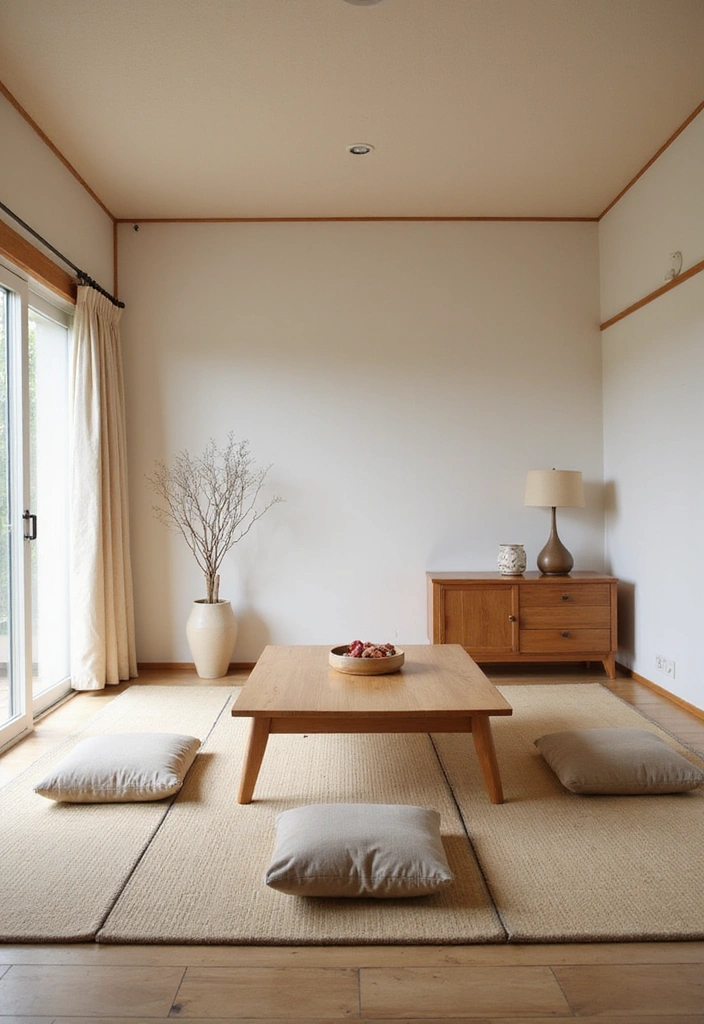
Less is truly more in a traditional Japanese living room.
The philosophy behind this style is to create a tranquil space free from clutter.
Select a few essential pieces of furniture and decor to maintain an airy feel. A low wooden table surrounded by floor cushions encourages intimacy and conversation.
Embrace empty space as a vital part of the design, allowing your eyes to rest and your mind to unwind.
– Invest in multifunctional furniture to save space.
– Limit decorative pieces to a few meaningful items, like a vase or a bonsai tree.
– Use hidden storage solutions to keep your essentials out of sight.
– Keep color palettes soft and neutral to enhance the open feel.
Integrate Nature with Indoor Plants
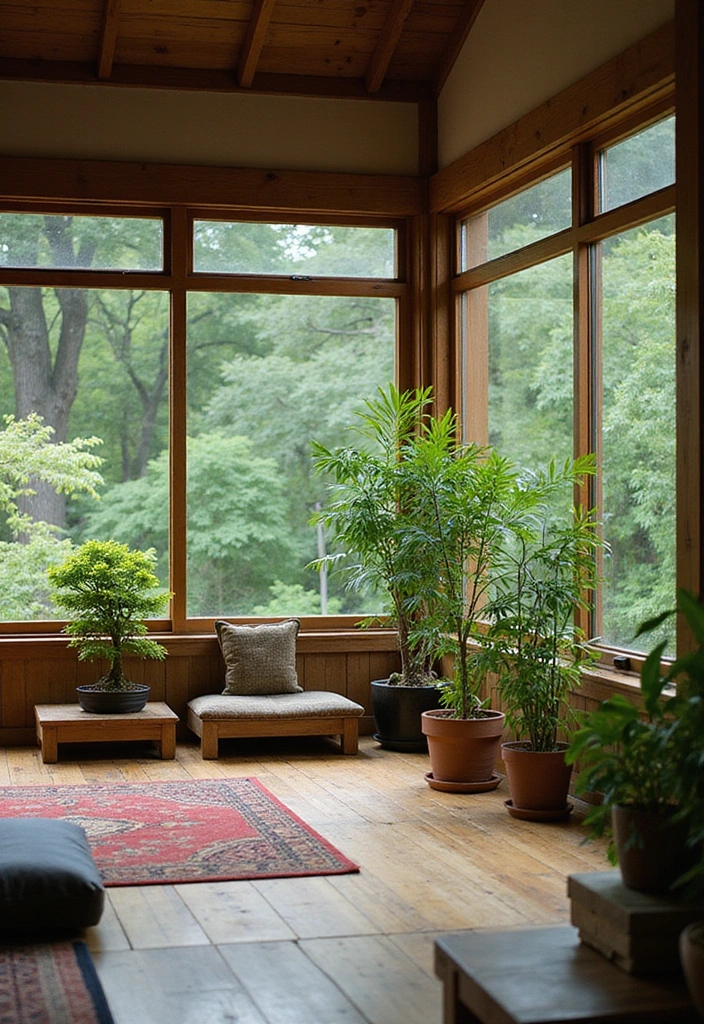
Bringing the outdoors in is an essential aspect of Japanese aesthetics.
Incorporating indoor plants adds life and a splash of color to your living space.
Choose plants with simple, elegant forms, such as bonsai, ferns, or peace lilies. These not only beautify your room but also purify the air, enhancing your well-being.
Position your plants near natural light sources, and consider using ceramic pots that harmonize with your interior.
– Select plants that require low maintenance to fit your lifestyle.
– Use hanging planters for a modern touch, keeping the floor space clear.
– Create a small indoor garden on a windowsill or shelf to maximize nature’s presence.
– Consider seasonal plants to keep the decor fresh throughout the year.
Use Soft, Natural Lighting
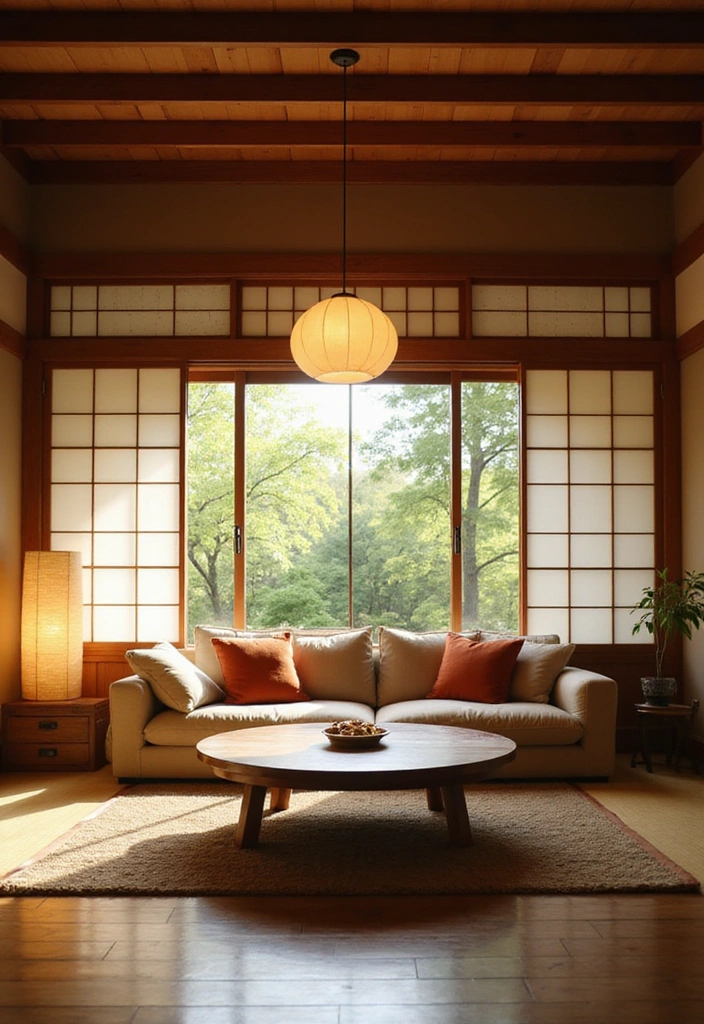
Lighting sets the mood in any room, and in a traditional Japanese living room, soft, diffused lighting is key.
Utilize natural light as much as possible by keeping windows unobstructed. Shoji screens also work wonders to soften harsh sunlight, creating a warm glow throughout your space.
You can add paper lanterns or simple pendant lights that echo the natural themes of your decor.
– Choose warm white bulbs to maintain a cozy atmosphere.
– Avoid harsh overhead lighting; instead, opt for multiple layers of soft lighting.
– Use dimmers to adjust the mood depending on the time of day.
– Create a focal point with a beautifully lit piece of art or nature scene.
Incorporate Zen Elements

A traditional Japanese living room is incomplete without a touch of Zen.
Incorporating elements that promote peace and mindfulness can transform your space into a sanctuary.
Consider adding a small Zen garden with sand and stones, or a meditation area with floor cushions for relaxation.
Art pieces depicting serene landscapes or nature can also contribute to this calming atmosphere.
– Use water features like small fountains to add a soothing sound.
– Choose flat surfaces for decor to maintain an uncluttered look.
– Create areas for quiet reflection, free from technological distractions.
– Opt for calming colors like soft greens and blues in your decor.
Choose Appropriate Color Palettes
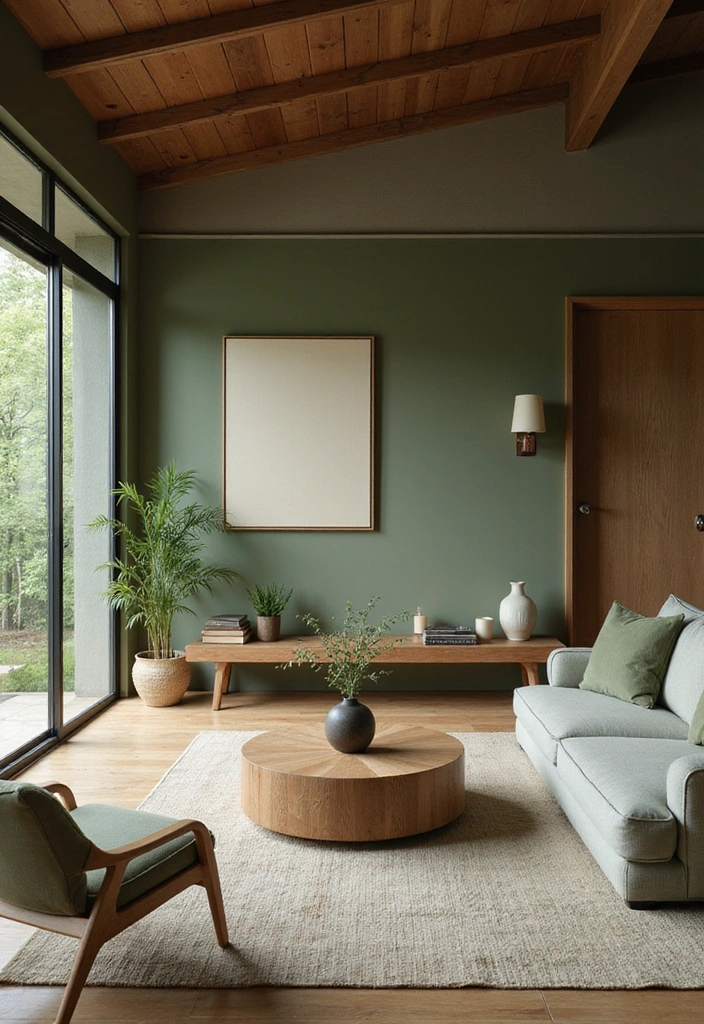
Color plays a significant role in creating a harmonious living room.
Traditional Japanese design often embraces muted and earthy tones that reflect nature.
Soft greens, browns, and beiges create a serene backdrop while providing warmth.
Accents of deeper colors like indigo or crimson can add depth without overpowering the space.
– Opt for watercolor-like walls for a unique touch.
– Use natural fabrics in complementary colors for textiles.
– Balance bold colors with neutral shades to maintain harmony.
– Consider seasonal adjustments to your color palette for a fresh feel.
Utilize Traditional Furniture

True to its roots, a traditional Japanese living room often includes furniture pieces that celebrate craftsmanship and functionality.
Low tables, often referred to as ‘chabudai,’ and floor seating like ‘zabuton’ cushions are common, promoting a relaxed atmosphere.
Choose pieces that showcase natural wood grains and minimalist designs, which reflect the beauty of simplicity.
– Invest in quality over quantity to ensure durability.
– Pair traditional items with contemporary touches for a fresh look.
– Look for handmade pieces that come with stories behind them.
– Use furniture arrangements that encourage easy conversation and flow.
Incorporate Wall Art and Decor
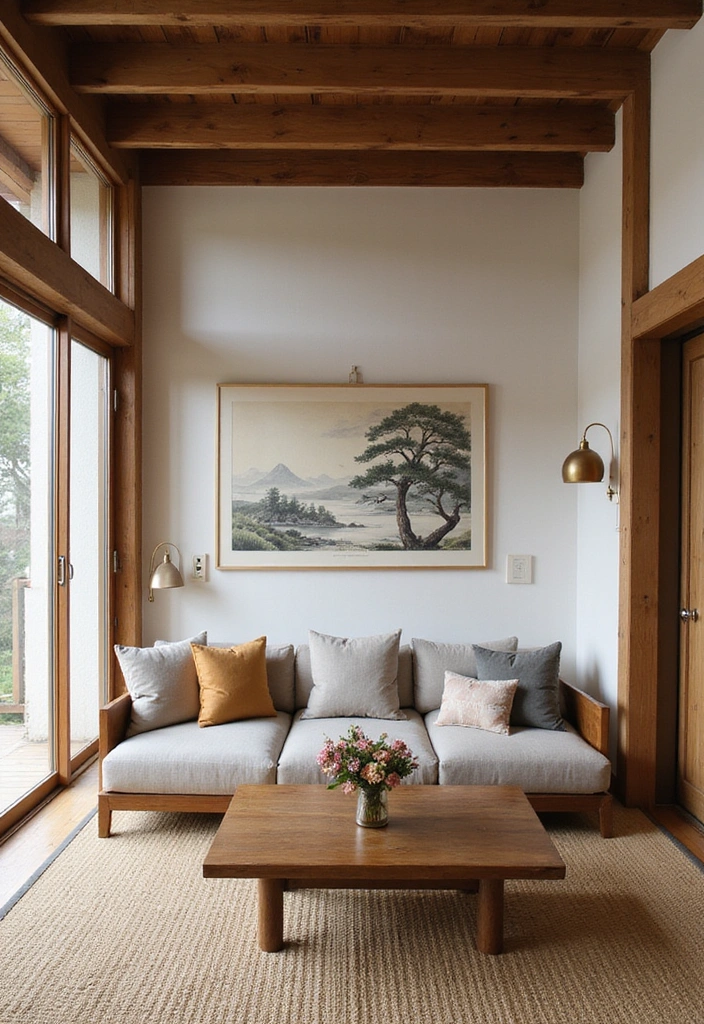
Art in a traditional Japanese living room should be thoughtfully curated to enhance the overall theme.
Choose pieces that reflect Japanese culture, such as calligraphy, landscape paintings, or textile art.
Hanging art at eye level and incorporating natural materials like wood and paper will maintain the room’s harmony.
– Avoid overcrowding walls; select a few impactful pieces that resonate emotionally.
– Consider using a gallery wall to display seasonal or rotating pieces.
– Use simple frames that complement your decor without drawing attention away.
– Keep the color palette of the art cohesive with your room’s atmosphere.
Create a Sense of Flow
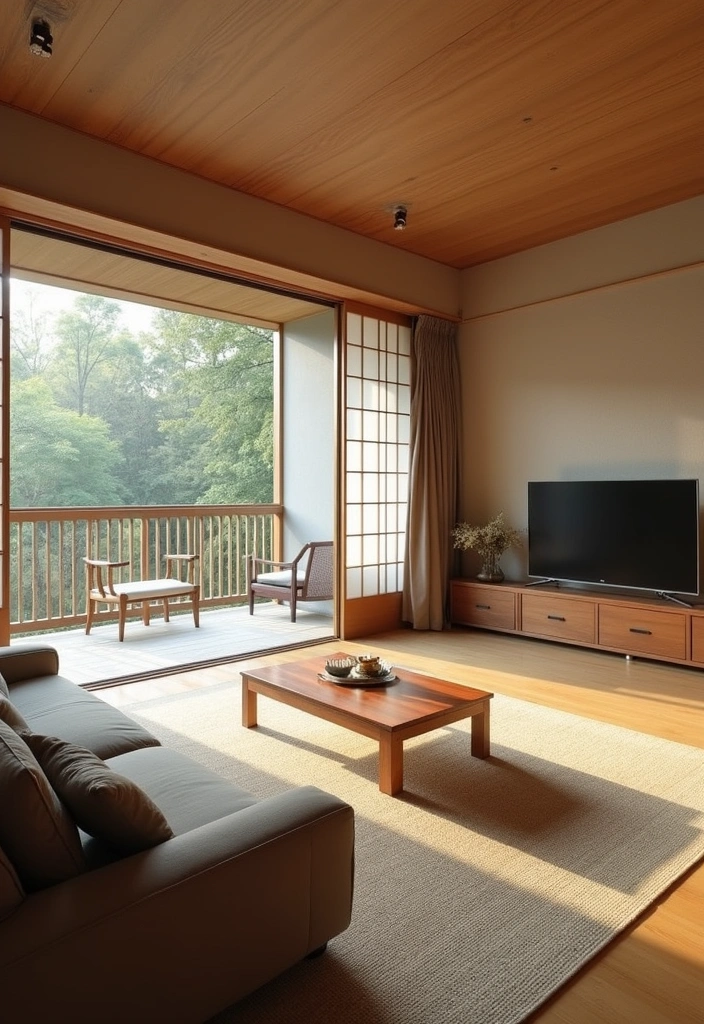
A harmonious living room should feel cohesive and flowing, both visually and functionally.
This can be achieved through careful placement of furniture and decor that complements one another.
Ensure there are clear pathways, allowing for easy movement throughout the space.
– Use mats to define different areas, such as relaxation and conversation zones.
– Maintain similar heights in furniture to avoid visual disruption.
– Create transitions between different materials and colors for a unified look.
– Allow open spaces between pieces to encourage flow.
Maximize Multi-Functionality
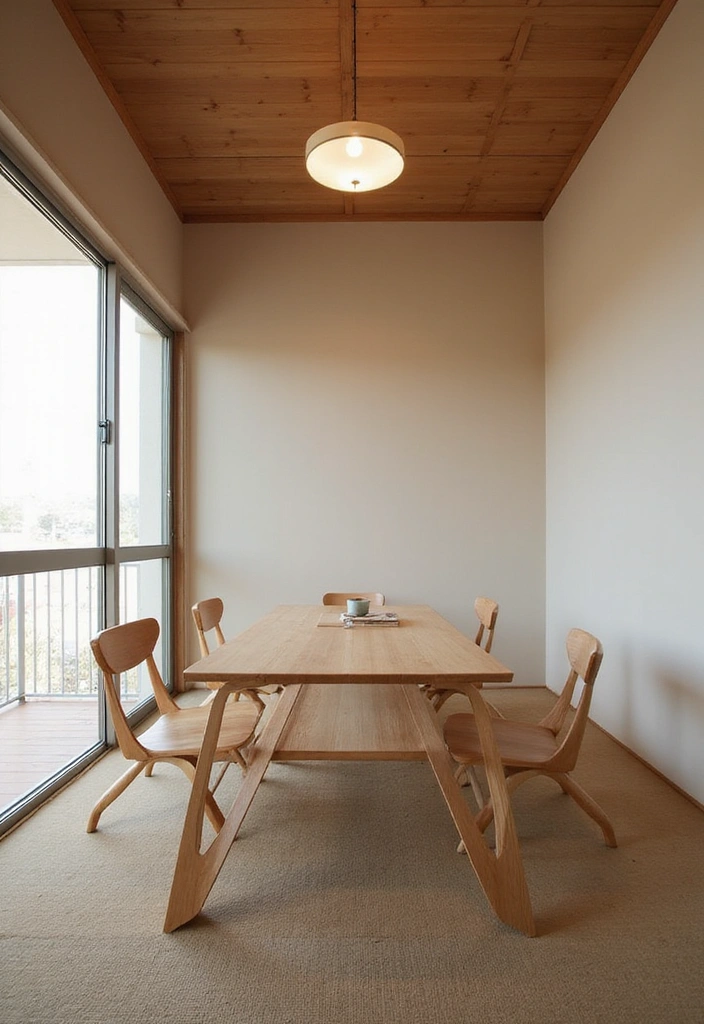
In smaller living spaces, multi-functional furniture can be a game-changer.
Traditional Japanese design emphasizes simplicity, which means that every piece should serve a purpose.
Consider low tables that can double as dining and workspace, or storage ottomans that provide seating and conceal items at the same time.
– Choose collapsible furniture for easy storage when not in use.
– Look for pieces with built-in storage solutions to keep your space tidy.
– Use decorative boxes or baskets to organize items without compromising aesthetics.
– Create a flexible layout that can adapt to different occasions.
Incorporate Textures
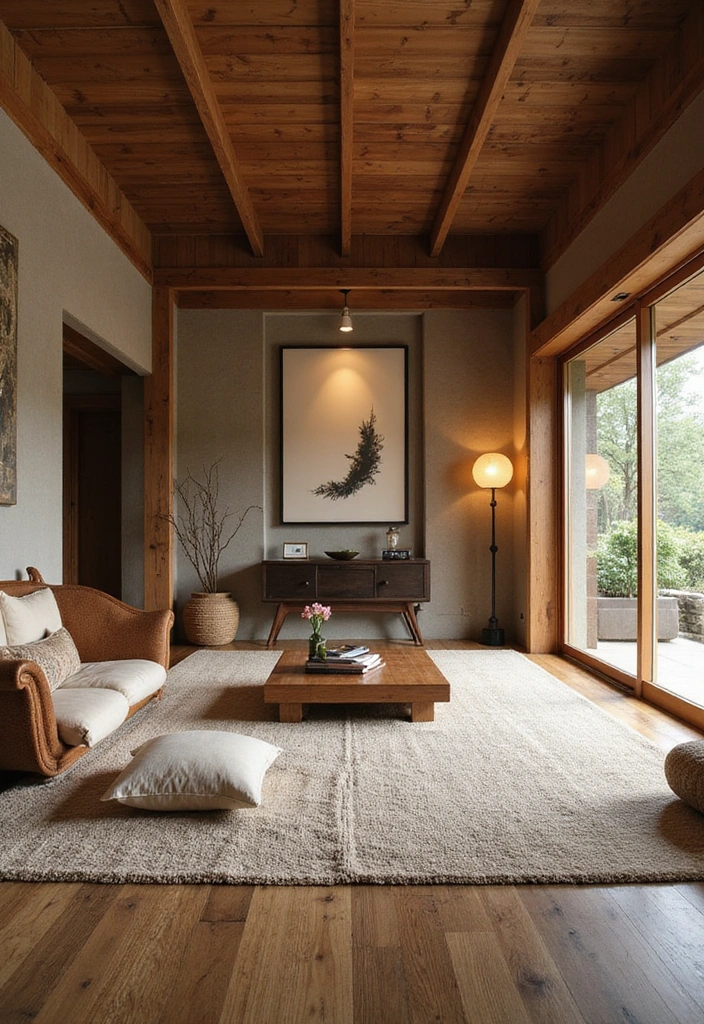
Textures play a crucial role in adding depth and warmth to a traditional Japanese living room.
Mix and match various fabrics, like cotton, linen, and silk, to create a rich tactile experience.
Incorporate woven baskets, wooden decor, and stone accents to enhance visual interest while maintaining a calm aesthetic.
– Layer textiles with different weaves for a cohesive look.
– Use pillows and throws in natural materials for comfort without visual clutter.
– Consider sliding doors with textured paper for a unique touch.
– Balance rough and smooth textures to create a dynamic feel.
Focus on Functional Decor

Decorating your traditional Japanese living room should go beyond aesthetics; functional decor is key.
This includes items that not only beautify the space but also serve a purpose.
For example, incorporating an intricate tea set not only adds beauty but invites ritual and conversation.
Wall shelves can display books and art, while also keeping surfaces clear.
– Choose decor that tells a story or reflects your personality.
– Use decorative boxes to store items like coasters or remotes.
– Incorporate natural elements that aid in relaxation, like essential oil diffusers.
– Emphasize simplicity; each piece should have a reason to be in your space.
Maintain a Clean and Organized Space

A clean and organized living room is essential for maintaining the tranquil atmosphere of a traditional Japanese design.
Regular tidying and decluttering should be part of your routine to keep the space inviting.
Create dedicated storage spaces for essential items and make it a habit to put things back in their places.
– Implement a ‘one in, one out’ rule for new items to avoid clutter.
– Encourage family members to join in maintaining the tidy environment.
– Use storage solutions that blend seamlessly with your decor.
– Regularly assess the items in your living room to ensure they still serve a purpose.

